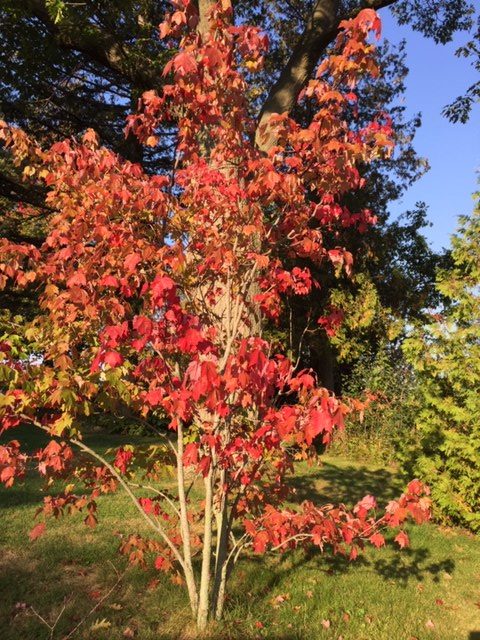 This is one of the best times of the year to get out into the woods and onto the trails. The bugs are mostly finished their business of making us into lunch, the days are cool and clear and the trees are starting to put on their show. This is the perfect time to get your vitamin G for green, or as the days progress vitamins R for red, O for orange, and Y for yellow. It is also a great time to plant a tree. Many garden centres hold auctions and sell offs to empty their yards before winter and many fine trees can be purchased for bargains. During autumn trees can settle into your soil more easily in the cool weather and are programmed to set their roots at this time of year. This helps them get through winter and be ready to grow next spring, giving you a head start.
This is one of the best times of the year to get out into the woods and onto the trails. The bugs are mostly finished their business of making us into lunch, the days are cool and clear and the trees are starting to put on their show. This is the perfect time to get your vitamin G for green, or as the days progress vitamins R for red, O for orange, and Y for yellow. It is also a great time to plant a tree. Many garden centres hold auctions and sell offs to empty their yards before winter and many fine trees can be purchased for bargains. During autumn trees can settle into your soil more easily in the cool weather and are programmed to set their roots at this time of year. This helps them get through winter and be ready to grow next spring, giving you a head start.
Choose according to the conditions in your yard, not simply the color you prefer. For example, birch trees are beautiful and a lovely yellow in fall but require adequate moisture to thrive. If you have a low wet spot or a pond in your yard it’s a go. For more well drained conditions nothing can beat our iconic sugar maples or red maples. Full sun is a necessity for any of these trees and you must keep them well irrigated for the first two years.
But what to do with all those leaves once they are on the ground? Leaves are best mulched with a mower for use in the garden and results will not be as good with whole leaves. Whole leaves tend to create mats that block water flow down into the beds and take too long for worms and other soil organisms to do their work. A mulcher for your mower is a great investment. It mulches your lawn all summer so you are constantly feeding the lawn, and in fall, using it to run over piles of leaves and then gathering the chopped leaves is a golden resource. Here are five suggestions for using those mulched leaves that can all contribute to the health of your garden, producing conditions for lush, vibrant growth.
- Dig them into your vegetable garden. As you remove vegetables for harvest and create blank spaces in your patch, this is an opportunity to add mulched leaves by digging them into the first few inches of soil.
- Create new garden beds. If you are into lasagna style garden beds where layers of compost, manure and leaves are used in alternate layers to form a bed, those leaves will be needed. Or just dig them into any prepared bed you have dug and you will have richer soil for planting next spring.
- Add winter insulation. Mulched leaves make excellent winter mulch. They are best added once freeze up is here as this prevents rodents from settling under the leaf layer and they do the job of keeping frost in the ground to prevent crown lift from the freeze thaw cycling. For delicate shrubs, A circle of chicken wire set into the ground around the plant can then be filled with leaves to protect the plant from excessive wind, sun etc.
- Make leaf mold. Pile leaves in a composter, wire cage or even garbage bags punched with air holes. In about one to two years you will have leaf mold. This is a garden additive on par with compost for adding nutrients and beneficial microbes to your soil.
- Store mulched leaves in bags in a dry place for use later. They will be useful over winter for adding to the compost bin or next spring as mulch in the vegetable or ornamental gardens.
In the meantime, get out there and take a long walk in the woods. There’s nothing as good for the soul as taking in all that fall color set against a true blue sky!
This article was authored by Tanya Crowell
